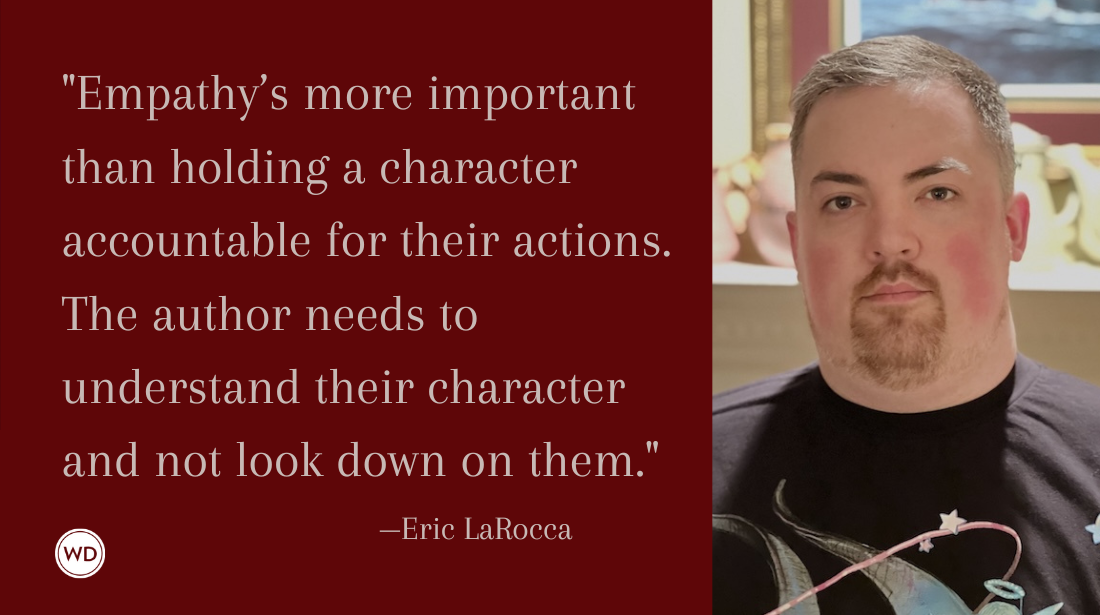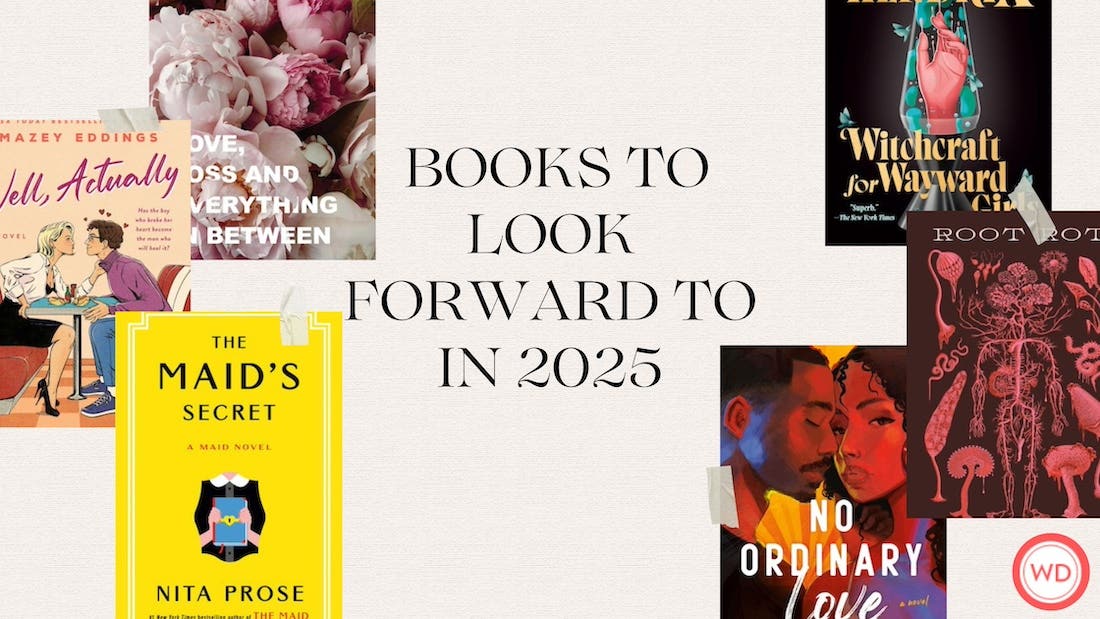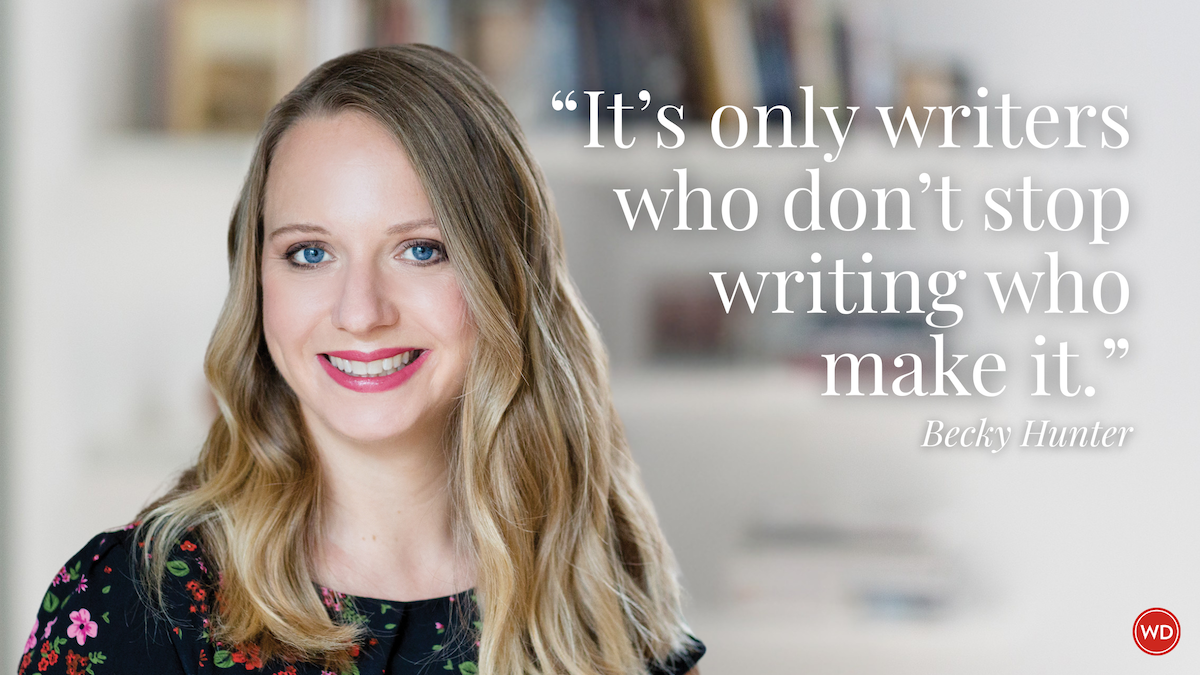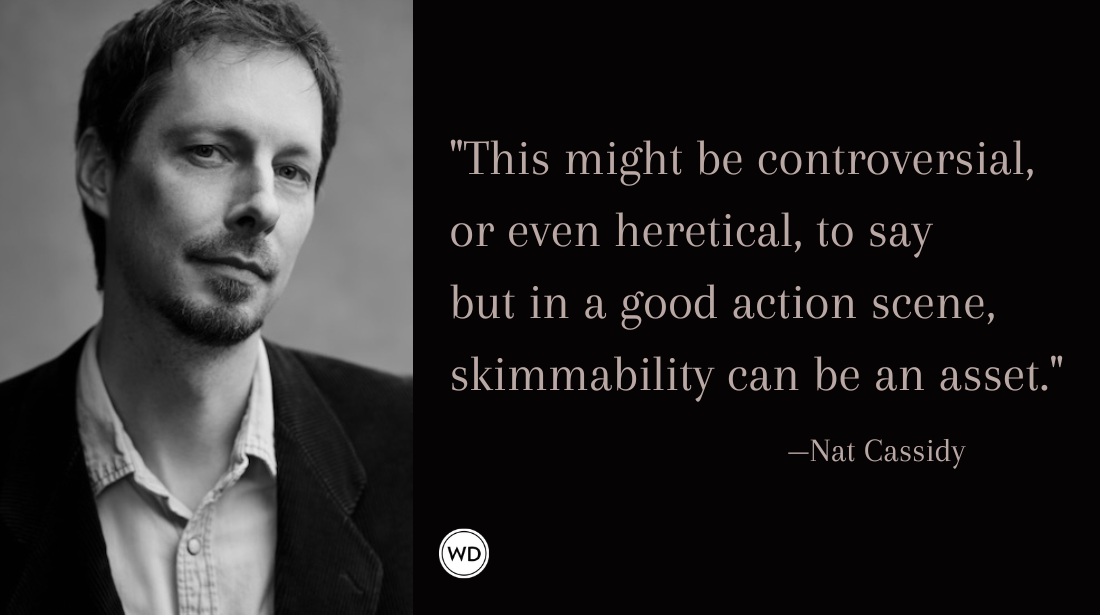How to Organize Time for a Dramatic Story
Every story, like every sequence of memorable events in life, has its own chronology; that is, significant happenings with a beginning, middle, and end. As we have said, they may not however be told in that order, which only makes matters more interesting. Embedded in the task of designing a plot sequence is the fundamental question—how will I handle time? Cinema has considerable temporal elasticity. The time element of a story can be greatly manipulated within the film’s actual duration. So where to begin?
Every story, like every sequence of memorable events in life, has its own chronology; that is, significant happenings with a beginning, middle, and end. As we have said, they may not however be told in that order, which only makes matters more interesting. Embedded in the task of designing a plot sequence is the fundamental question—how will I handle time? Cinema has considerable temporal elasticity. The time element of a story can be greatly manipulated within the film’s actual duration. So where to begin?
***************************************************************************************************************************
This excerpt on screenwriting is from Directing: Film Techniques and Aesthetics, 5th Ed. (Focal Press) by Proessor Emeritus Michael Rabiger & for the first time, co-author, Mick Hurbis Cherrier. The book has been heralded by USC Graduate Film Professor Jeremy Kagan and American Cinematographer advises "For those about to embark on their debut short or feature, 'Directing' offers a thorough manual that keeps one from having to learn everything the hard way."
***************************************************************************************************************************
The first question when considering the issue of time is: How much time does this story cover? J.C. Chandor’s first feature film Margin Call (2011) follows the actions of an investment bank’s executives over a 24-hour period as they cope with a financial crisis that could ruin the company literally overnight. The Messenger (2009), by Oren Moverman, follows Sgt. Montgomery during the last three months of his deployment (the time he is assigned to casualty notification duty), and Tom Hooper’s The King’s Speech (2010) explores King George IV’s relationship with his speech therapist over a 14-year period. Istvan Szabo’s Sunshine (1999) follows the fate of a Hungarian family over three generations, from the end of the 19th century to the Hungarian revolution of 1956. All these films are roughly two hours long.
Whatever the time-span your story traverses, you must consider how to condense that expanse into your film’s actual running time: for a short you’ll have anywhere between three to 30 minutes; for a feature approximately 70–120 minutes. Given this imperative, you can see how almost all film stories must condense time by presenting only events crucial to the story, and how they must exclude whatever is extraneous or can be inferred by the audience.
WHERE TO BEGIN AND END
First ask yourself: Why am I starting this story here, at this moment rather than one hour, one day, or one week earlier or later? Where you begin should announce very clearly what this movie is about, as if you were making a contract with your audience. For this reason, we always try to start as close to the true conflict as possible. The slice of history that screenwriter David Seidler presents in The King’s Speech begins with Bertie’s first ever radio address in 1925, a disaster revealing his calamitous verbal stammer to the world. The writer ignores everything in Bertie’s life leading up to this moment and instead plunges us directly into this central conflict. Bertie’s past (his backstory) emerges only when necessary and through occasional dialogue rather than whole scenes.
In The Messenger, Moverman does not start with Sgt. Will Montgomery in the Iraq war because the film is principally not about his war experiences but the trauma he carries well after combat. So the film starts when Montgomery is ordered to join the experienced Cpt. Stone as a two-man Casualty Notification team.
Once you’ve established where to begin, you need to understand very specifically where your film will end. Seidler ends after Bertie, now King George VI, successfully delivers the most important address of his life (1939). This resolves both his ability to control his stammer and his capacity as a Royal Monarch and leader. Beginning with a disastrous speech and ending with one that is historically important and emotionally moving not only traces a dramatically satisfying arc but also presents a lovely narrative symmetry. The Messenger ends when Sgt. Montgomery finds the strength to open up and tell Cpt. Stone, now his trusted friend, exactly what happened during the firefight where he earned his “hero” status. This scene unlocks and resolves the dramatic questions surrounding the mystery and cause of Sgt. Montgomery’s irregular behavior.
Between these poles, beginning and end, you must now carefully devise how to handle the organization through time of all the other events that make up the plot of your film.
OPTIONS FOR ORGANIZING TIME
Cinema is highly flexible when it comes to organizing the events of a story over time because films can easily move forward and backward in time, in large or small leaps. We can suspend, reverse, expand, or contract time. We can even repeat moments according to whatever works best for the story we’re telling. Here are a few organizing strategies, starting with the most strictly linear approaches and moving to more temporally free-flowing options.
Real Time
Real time, something seldom tackled by film, means that events unfold without breaks, lapses, or ellipses so that the complete story has the same duration as the film’s running time. Agnes Varda’s Cleo from 5 to 7 (1962) shows two uninterrupted hours in the life of a French singer, convinced she is dying of cancer, as she wanders the streets of Paris waiting for the results of a medical test. The drama of her situation justifies using real time, but usually it’s difficult for feature films to overcome the conspicuousness of this device. Short films however, especially the slice of life genre, can pull off real time very successfully. Rodrigo Garcia’s 2005 film Nine Lives presents nine portraits of women at particularly revealing moments in their lives. Each little portrait is a 10-minute, self-contained, real time short film.
Chronological Time
Far more common than real time are films that adhere to chronological time, where chronology means putting events in sequential order, from beginning to end. Chronological films can however be highly elliptical, meaning they elide (skip over) large chunks of time (hours, days, weeks, years) thus excluding whatever is inessential. The Messenger and The King’s Speech, both strictly linear films, never once present an event out of its chronological order. The first act of The King’s Speech, from Bertie’s Wembley speech to the moment he returns to Logue’s office after the haranguing from his father, covers a span of nine years (1925–1934) yet each represented event happens in chronological order.
Many essentially chronological films will insert a flashback here and there which disrupts the linear flow somewhat, but not significantly.
In Medias Res
In medias res, which translates as “into the middle,” is a common narrative time manipulation. The story begins at some crisis point deep into the story as a dramatic hook and then bounces back to the beginning. Once this flash forward opening is completed, these films usually follow a chronological progression leading back to that crisis point. In medias res plunges the audience into the heart of the conflict and privileges emotion and action over exposition. It also puts the audience ahead of the main character because they know what will befall the protagonist. This creates provocative dramatic questions such as, how the character got from here to there and additional dramatic tension as we watch the main character’s unknowing and inevitable march toward a previously revealed crisis.
Jon Favreau’s Iron Man (2008) starts with Tony Stark, in a tailored suit, riding in a Humvee in the middle of Afghanistan. The vehicle comes under intense fire that kills all the marines transporting him. As Tony tries to flee the kill-zone a missile detonates, seriously injuring him. When Tony regains consciousness he discovers that he has been taken captive by an Afghan terrorist group. This blistering opening leaves us wondering: What’s going on? Who is this guy? Then the plot backs up 36 hours and introduces us to Tony Stark and Stark Industries before chronologically making its way back to the firefight and beyond.
Sean Penn’s Into the Wild (2007) begins near the end of Christopher McCandless’s two-year journey to escape the corruption of modern civilization and find greater spiritual freedom. In the first 13 minutes of the film we see him arrive in the Alaskan wilderness, find the abandoned school bus which will become his shelter, and carve into a table his manifesto beginning the “climactic battle to kill the false being within ... and victoriously conclude the spiritual revolution.” The plot then returns in time to McCandless’s university graduation two years earlier and traces his long journey from his family’s home, across the highways of America, and back to the Alaskan wilderness, where it then resumes the conclusion of McCandless’ personal revolution.
Frame Narrative
Frame narratives involve a framing device within which the film’s central story is told. This device most often uses a character from the central story recounting the events so that the central story (usually told chronologically) is an extended flashback. Eventually, the conclusion of the central story leads back to the framing story. Frame narratives have been used extensively through cinema’s history from Robert Wiene’s The Cabinet of Dr. Caligari (1920) to Danny Boyle and Loveleen Tandan’s Slumdog Millionaire (2008).
David Fincher’s The Social Network (written by Alan Sorkin, 2010) is a slightly more complex frame narrative that tells the story of Facebook’s creation through two separate flashbacks. These originate from two lawsuit depositions that occurred well after the success of the company.
The device of two frame narratives allows Fincher to tell the story in retrospect and from multiple points of view (Zuckerberg’s, Saverin’s, the Winklevosses and the official record). Most valuably, it also allows Fincher to bridge large gaps in the story and represent only events critical to his particular take on the Facebook story. This excludes events concerning computer code, network development, the process of incorporation, capital investment, or company valuation and instead concentrates on the development of Mark Zuckerberg’s personal relationships and inner motivations. This is precisely why the film begins with a scene between Mark and his girlfriend on their final, dreadful date. Because the opening scene zeroes in on Mark’s character, ambitions, vulnerabilities and his humiliation, this becomes a film not about a corporation, but about a brilliant young man with human needs and fallibility, and one who must prove his worth by building a personal empire.
Parallel Time
Parallel time, also called parallel storytelling, involves intercutting between multiple story lines of more or less equal dramatic weight in order to create narrative and thematic associations across time and terrain. The intercutting can create disruptions in linear time, but each individual storyline usually progresses chronologically.
This technique was influenced by the novels of Charles Dickens and first applied to the cinema by D.W. Griffith, who took the technique to the extreme in his sprawling epic Intolerance (1916). The film spans 2,500 years of human history and follows the struggle between love and intolerance in four separate stories from four different time periods: a contemporary story (1914) of a boy wrongly accused of a crime; events from the life of Jesus Christ; the massacre of the Huguenots by the Catholics in 16th-century France; and the fall of ancient Babylon around 540 bc. The cumulative thematic effect of the four juxtaposed narratives is to assert that human history has been shaped by the struggle of love to survive in the midst of persistent intolerance.
The same plot strategy can be seen in Paul Haggis’ Crash (2005) with its multiple storylines linked by the social tension surrounding issues of race and violence; and in Stephen Daldry’s The Hours (2002) which revolves around the lives of three women from different time periods (1941, 1951, 2001). Each must confront the specter of depression and suicide in their lives. Virginia Woolf’s 1925 novel Mrs. Dalloway serves as the central connection for the three main characters, one of which was Woolf herself.
Non-Chronological Narratives I: Subjective Time
Frequently a story’s chronology is rearranged to reflect a character’s subjective recall of events. This can take the form of multiple flashbacks intruding on the chronological narrative flow, each with a story line of its own. In Alain Resnais’ Hiroshima Mon Amour (1959), the Frenchwoman and her Japanese lover are consistently invaded by memories of their respective traumas—his, the dropping of the bomb on Hiroshima; hers, punishment for a love affair with a German soldier in occupied France. These memories inject anguish into their relationship so that Resnais seems to propose that extreme lives are propelled by extreme trauma. By juxtaposing the past and present, this plot design poses questions about the effect of repressed personal history on present behavior.
More recently, Michael Mills’ Beginners (2010) incorporates several layers of temporally fluid and interrelated flashbacks. In the present-day story, Oliver is trying to begin a romantic relationship with Anna, a French actress. The difficulty is that Oliver is grieving over the recent death of his father Hal and reeling from Hal’s revelation, toward the end of his life, that he is gay. As Oliver becomes more intimate with Anna he is inundated with memories of taking care of his father while Hal struggled with terminal cancer and exulted in his new life as an openly gay man. Oliver also reflects on his parents’ relationship when he was a boy, as more distant memories of himself and his mother surface. The close emotional proximity of Oliver’s past with the events of his present both encourage Oliver to fall in love and cast into doubt whether anyone can truly know another.
Non-Chronological Narratives II: Repeated Time
Occasionally, films will repeat events, usually to represent a new perspective or new context, or to extract a new meaning from some moment the audience assumed they understood. But few are the films that build an entire plot around event repetition. Harold Ramis’ very funny Groundhog Day (1993) features a man trapped in a time loop. A jaded TV weatherman is sent on assignment to cover the annual emergence of groundhog Punxsutawney Phil, but finds himself waking up on the same day over and over again. Each time he relives this day he learns a little more about himself until he finally he comes to understand what he’s doing wrong and can escape the time loop as a purged and happier man. This perhaps takes its inspiration from the Hindu belief that we are reincarnated into new bodies, from life to life, until we attain perfection.
The celebrated Run Lola Run (Tom Tykwer, 1998) repeats the same moment three times—the 20 minutes during which Lola races to save her boyfriend from gangsters who are intent on killing him. Each run traces the same journey but with very slight variations, revealing how tiny changes in a person’s timing and route can have enormous repercussions in the outcome of many people’s lives.
In the case of Akira Kurosawa’s classic Rashomon (1950) the events of a murder that occurred in a wooded grove are recounted at the trial four times (in flashback) by four witnesses: the bandit (the murder suspect), the murdered samurai (through a medium), the samurai’s wife, and the woodcutter. Each version favors the perspective of the witnesses who cast themselves as blameless victims. Interestingly, this film also uses a frame story because the events of the trial itself are being retold by a woodcutter and a priest to a commoner as they wait out a rainstorm at the ruined Rashomon gatehouse. In other words, we are shown flashbacks within flashbacks, a plot design which, given the vagaries of subjectivity and self-interest, calls into question the reliability and validity of anyone’s memory or testimony.
Non-Chronological Narratives III: Reverse Chronology
As its name implies, reverse chronology involves a plot line that orders events backwards in time. Jane Campion’s first full length film Two Friends (1986) is told entirely in reverse chronology and begins with two teenagers who appear to be estranged friends and vastly different from one another. Louise is a great student destined for a fine school while Kelly is trapped in an aimless life and into drugs. As the film traces their friendship in reverse order (over the previous year) we see them slowly converging and getting closer and we realize that only a few differences (small and large) pushed them onto radically different life paths. In Louise’s case, opportunities were given to her, but for Kelly they were stripped away. At the end of the film, we see their poignant beginning: two inseparable friends, very much alike, with the same energy, intelligence and potential for the future.
A few films have even attempted to mix chronological time and reverse chronology in different story lines. In Michel Gondry’s Eternal Sunshine of A Spotless Mind (2004) the reverse chronology of Joel Barish’s memories, as they are being erased, play against the chronological story of the Lacuna Corp. procedure itself. Another example is Christopher Nolan’s Memento (2001), which tells the story of a man suffering from short-term memory loss trying to piece his way backward to the moment of his wife’s murder. One element of the plot follows events chronologically (the black- and-white sequences) and another storyline plays out in reverse chronology (the color sequences). These two storylines, moving backward and forward, converge by the end of the film at a common point. Since the viewer enters moments and locations with no notion of what came before, or why they’re there, this strategy plunges the audience into the point of view of a protagonist suffering short-term memory loss.
Want more? Get this free download on How to Choose a Point of View for your Novel.
************
For more on Brian, his blogs and his book, click here.
Follow on Twitter: @BrianKlems








